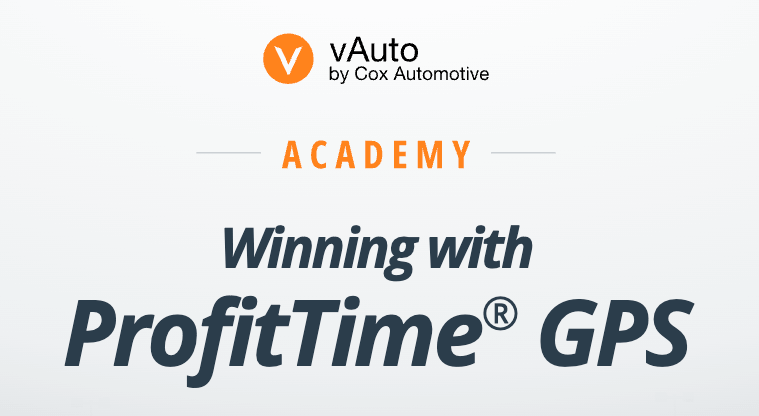As I’ve been helping dealers reckon with the vehicles they purchased at the top of the market and failed to retail in recent weeks, I’ve been reminded of what might be considered the “wild, wild West” in many dealerships.
I’m talking about the appraisal process, and the degree of

variability that too often exists between appraisers, as well as a common disconnect between appraisers and the individuals who price used vehicles for retail sale. Let’s take a closer look at both.
Appraisal Variability
There’s an old axiom in the car business that if you asked five different people to appraise the same vehicle, you’d end up with five different answers. The variability owes to each appraiser’s individual capabilities and skills—some are better able to put good eyes/ears on a car than others. The variability also owes to how well appraisers are trained, and whether they’re all truly operating from the same playbook and process. The variability also owes to the time an individual appraiser might have to evaluate a vehicle; if you’re pressed for time, it’s easy to overlook small stuff that can diminish a vehicle’s value. Finally, there’s absolutely no question that appraisal variability also stems from the circumstances surrounding each car and the customer who’s looking to sell or trade it, and potentially buy another vehicle.
In my work with dealers, I’ve also come to understand that appraiser variability also results from a lack of clear guidelines for appraisers, and sufficient oversight on the part of dealers and managers. I see evidence of this in recent efforts dealers have launched to tame and tighten up their appraisal process. They are committing themselves to do a better job of tracking individual appraiser performance, and coaching them to achieve better outcomes.
But the tracking itself is also a bit problematic. While dealers may set standard Cost to Market or Look to Book targets for appraisers, and use these metrics to gauge individual performance, the metrics themselves only go so far, particularly in today’s environment where dealers are appraising and sourcing vehicles from a wider variety of channels. If you’ve established a goal that appraisers should average a 50-55 percent Look to Book and 85 percent Cost to Market is that truly applicable and relevant to every car in every channel and every circumstance? Does this method help you account for, and potentially correct, variability or does it invite more of the same?
The Appraising and Pricing Disconnect
Another appraisal-related area that some dealers are looking to address occurs between appraisers who establish what the dealership should pay for a vehicle and the individuals who price vehicles once they’re acquired.
This disconnect isn’t new, but it’s becoming more problematic as market conditions put pressure on dealers to acquire cars with a clear and shared understanding of the vehicle’s retail potential, from the moment of establishing the vehicle’s appraised value to the initial retail asking price for the vehicle and beyond.
In an ideal world, appraisers would use a retail-back approach after they’ve assessed a vehicle’s condition to determine how much they should pay for the car. Unfortunately, the current state of this process leaves room for subjectivity on the part of the appraiser, which drives the disconnect between appraisers and those who price cars.
For example, it’s common for appraisers to use a Price to Market percentage or a vRank in vAuto to determine the vehicle’s retail price. The problem arrives when an appraiser adjusts the Price to Market percentage or vRank to fit the circumstances of the car, the customer or, in some cases, their paycheck. An appraiser might have a need to put more into a vehicle than the initial Price to Market percentage or vRank appears to allow. To meet this need, it’s not uncommon for appraisers to adjust the Price to Market or vRank higher, to give the appearance that their appraised value offers sufficient gross profit margin.
Unfortunately, the appraiser’s justification and reasoning often doesn’t extend to the individual pricing the vehicle. If the appraiser used a Price to Market percentage of 101 percent, or a vRank of 20, to bring in a car, the person pricing the car might determine its retail price should match a Price to Market percentage of 97 percent, or a vRank of 7.
When this scenario happens, a dealer suddenly has a vehicle that, for all intents and purposes, they paid too much to acquire and they’re now destined to realize a less-than-optimal gross profit or retail outcome on the car.
A New Approach to Tame and Tighten Your Appraisal Process
The good news for dealers who are looking to achieve more consistency and fewer disconnects between appraising and pricing is that there is a better way of doing it.
The better way starts by anchoring everyone around a “North Star” or a strategic target by which appraisers can examine every vehicle, know the right retail price range for each car to determine a retail-back appraisal value and capture the rationale and reasons the appraiser used to bring in a car above or below the strategic target.
This approach is embedded in the Global Acquisition system inside ProfitTime GPS. The system gives dealers the ability to set an investment value target for acquisitions, as well as the ability to measure, over time and many appraisals, how often and how close appraisers bring in cars to the dealer’s established acquisition/appraisal target.
Investment Value Targets—A North Star for Every Car
ProfitTime GPS’ Global Acquisition system enables dealers to establish a strategic, investment value-based target, or North Star, to guide appraisers as they evaluate vehicles. The targets are drawn from the 1 to 12 investment scores ProfitTime GPS assigns to vehicles based on data science that distills a host of factors, including the vehicle’s like-mine Market Days Supply, its Cost to Market and retail sales volume. Vehicles with lower investment scores represent units with higher risk and less profit opportunity, while higher investment scores denote vehicles with less risk and more profit opportunity.
Dealers can choose a target from the 1-12 scale that best fits the profit and volume objectives for their dealerships.
For example, a dealer who’s hungry for used vehicle inventory, or needs to capture more trade-ins to help move new vehicle inventory, might pick a more aggressive investment value target, between 3 and 5, that enables them to put more into each vehicle for the sake of driving the larger objectives. Conversely, a dealer who’s most concerned about gross profit, might pick an investment value target of 8-10 to bring in vehicles with the gross profit potential the dealer prefers.
When dealers establish a target and appraisers begin an appraisal in ProfitTime GPS, they immediately see the recommended retail price range that’s optimized for the dealer’s target. The range gives them an objective, strategy-aligned starting point to perform a retail-back appraisal. With the range in hand, appraisers can subtract expected costs (reconditioning costs appraisers calculate based on their condition assessment, transportation if the car’s purchased from an auction or other off-site location, and any other expenses dealers charge to the car).
The range doesn’t restrict appraisers from doing what needs to be done to make a deal or doing what’s right for the car. For example, if a customer’s asking for an additional $500 for a vehicle, the appraiser would know the additional money means they’d need to bring in the vehicle at an investment score that’s below the dealer’s target. If it makes sense for the appraiser to step up, they can, and the Global Acquisition system would mark the appraisal as “below” the strategic target, while offering appraisers the ability to note the reasons they determined it was best to bring in the car at a lower investment score.
Similarly, if the appraiser’s assessment of the vehicle uncovers reconditioning costs that are exceptionally high, the appraiser might decide it’s best to pay less for the vehicle, which would result in the vehicle’s appraised value arriving “above” the dealer’s objective.
A Better Way to Manage Appraisers and Variability
The beauty of establishing and following such strategic investment targets or North Stars for every car is that, for the first time, every appraiser has an objective starting point to assess and value each vehicle and determine an acquisition price or value that’s anchored to the dealership’s objective. This approach reduces, if not eliminates, the risk that appraisers’ retail price guesstimates and justifications for their appraised values do not make sound financial sense for the dealership.
Better still, the North Star provides an objective baseline for dealers to measure individual appraiser performance that’s far more relevant for the dealership’s overall strategy and the circumstances of the vehicle itself. Over the course of time and many appraisals, you can see how often individual appraisers bring in cars at, above or below the dealership’s strategy, and you can know the reasons why behind their decisions.
Further, this ongoing analysis tends to produce key learnings. For example, if you find that few, if any, appraisals come in “on” strategy, you know you either have a coaching opportunity or a sign that your North Star objective isn’t quite right for current market conditions, or perhaps both. This strategy-based performance review yields even richer management insights when dealers layer in Look to Book, Cost to Market, volume and other metrics related to individual sourcing channels.
I’m encouraged by the early evidence from dealers that this investment value-based, strategy-minded North Star appraisal process is helping them assess, value, acquire and price vehicles with a greater level of objective-tied consistency, and a greater understanding of the reasons why appraisers are making their decisions.
I’ve also been struck by operational inefficiencies the North Star appraisal process is bringing to light—first and foremost being the inaccuracy of reconditioning costs appraisers assign to vehicles based on their condition assessments. No one benefits when a vehicle that appears to have been appraised and acquired “on” strategy takes a sudden, southerly turn because the appraiser missed blemishes you now need to fix. I’ll take up this topic in a future post.
The post A Strategy-Based Approach to Tame Appraisal Variability appeared first on Dale Pollak.
















